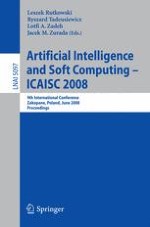This book constitutes the refereed proceedings of the 9th International Conference on Artificial Intelligence and Soft Computing, ICAISC 2008, held in Zakopane, Poland, in June 2008. The 116 revised contributed papers presented were carefully reviewed and selected from 320 submissions. The papers are organized in topical sections on neural networks and their applications, fuzzy systems and their applications, evolutionary algorithms and their applications, classification, rule discovery and clustering, image analysis, speech and robotics, bioinformatics and medical applications, various problems of artificial intelligence, and agent systems.
